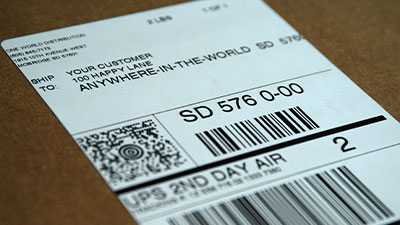Understanding 3PL Pricing Models: A Complete Guide for Ecommerce Businesses
Understanding the different 3PL pricing models is essential for ecommerce businesses that want to manage their fulfillment costs. Third-party logistics (3PL) companies provide various services such as warehousing, picking, packing, shipping, ecommerce personalization, and customer service, and their pricing structures can significantly impact your profits. Choosing the right 3PL model helps you save money and gives you the services you need to scale your ecommerce business profitably.
Why Does the 3PL Pricing Model Matter?
- Cost Efficiency: The right pricing model can help you save on fulfillment costs, which is crucial for maintaining healthy profit margins.
- Business Alignment: Different businesses have different needs. Choosing a 3PL model that aligns with your specific requirements can improve operational efficiency, and bundling services can help you save.
- Growth Support: As your business grows, your logistics needs will change. A flexible 3PL pricing model can support your expansion plans.
Factors to Consider When Choosing a 3PL Pricing Model
When selecting a 3PL pricing model, it’s important to consider the following factors:
- Order Volume: How many orders do you process in a given period? Some pricing models are more cost-effective at higher volumes.
- Inventory Size: How much inventory do you hold? This can impact storage fees and overall costs.
- Frequency of Shipments: How often do you ship products? Regular shipments may benefit from certain pricing structures.
Common 3PL Pricing Models
There are several common pricing models used by 3PL providers:
- Per-Unit Pricing: You pay a fixed amount for each unit stored or shipped. This model is straightforward but may not be the most cost-effective for large volumes.
- Flat-Rate Models: You pay a fixed fee regardless of the number of units stored or shipped. This can be beneficial if you have predictable order volumes.
- Variable Pricing Structures: Costs vary based on specific factors like order volume and SKU count. This model can be flexible but may require careful monitoring.
The Importance of Understanding Fulfillment Costs
The right 3PL provider can optimize operations and improve service delivery, turning logistics from just an expense into a competitive advantage. Having customizable fulfillment solutions and service add-ons such as personalized-to-consumer (P2C) fulfillment can help turn logistics from a cost to a new profit center.
By comprehending these pricing models, you can develop a fulfillment strategy that meets both your current needs and future growth plans.
What is 3PL Pricing?
Definition of 3PL Pricing and Its Significance in Logistics
3PL pricing refers to the cost structure involved when an ecommerce business outsources its logistics operations to a 3PL provider. This includes everything from warehousing and inventory management to order fulfillment and shipping.
For ecommerce businesses, understanding 3PL pricing is crucial as it directly affects profitability and operational efficiency. Collaborating with a 3PL provider allows enterprises to focus on their core competencies while leveraging the expertise and infrastructure of logistics specialists.
Key Components That Contribute to Overall Costs
When engaging with a 3PL provider, several key cost components should be considered:
- Handling Fees: These include costs incurred for receiving goods into the warehouse, organizing them, and preparing them for dispatch.
- Storage Fees: Charges are typically based on the amount of space your inventory occupies over time in the warehouse.
- Shipping Costs: These are significant as they vary depending on factors like delivery speed, distance, and carrier rates.
Understanding these components helps ecommerce businesses select the right pricing model that aligns with their unique needs, ensuring cost-effective logistics outsourcing.
Common 3PL Pricing Models
Understanding different 3PL Pricing Models is crucial for ecommerce businesses seeking to optimize their fulfillment strategies. Each model offers unique advantages depending on your business needs.
Per-Unit Pricing
Per-unit pricing, also known as transactional pricing, involves costs based on each item picked and packed. This model is straightforward:
- Cost Structure: Charges are incurred for every individual unit processed by the logistics provider. The cost per unit often includes handling, packaging, and sometimes shipping.
- Benefits: Ideal for businesses with predictable order volumes, as it provides clarity in budgeting and cost projections. Companies can forecast expenses based on expected sales numbers, allowing for efficient financial planning.
For instance, an ecommerce store selling personalized gifts might find per-unit pricing beneficial due to its predictable sales patterns during peak seasons like holidays.
Other 3PL Pricing Models
While per-unit pricing suits certain businesses, other models may better align with varied operational needs:
- Flat Fee Pricing: Offers budget predictability by charging a fixed rate regardless of order volume fluctuations. It’s particularly useful for businesses with consistent fulfillment demands.
- Activity-Based Pricing: Charges are based on specific activities such as receiving inventory or processing returns. This model supports detailed tracking of operational costs but may lead to higher expenses if not managed carefully.
Businesses should evaluate these models considering factors like order consistency, inventory size, and customer demand variability.
Per-Pallet or Per-Shelf Pricing
Per-Pallet or Per-Shelf Pricing offers a strategic solution for businesses managing large inventory volumes. This model is particularly beneficial for operations requiring extensive storage, such as those with seasonal stockpiles or wholesale products.
Ideal Scenarios
Best suited for businesses with large inventory needs, this pricing model allows for efficient use of space. Companies dealing with bulk goods can optimize storage by paying per pallet or shelf, aligning costs directly with their warehouse footprint.
Cost Implications and Benefits
By adopting this model, businesses can achieve a more predictable cost structure. With pallet storage fees and shelf fees, enterprises can anticipate expenses based on their storage requirements rather than fluctuating order volumes. This approach provides financial predictability and operational efficiency.
In essence, per-pallet or per-shelf pricing is a practical choice for ecommerce businesses that require substantial storage solutions, offering both cost-effectiveness and scalability in managing large inventories.
Flat-Rate Pricing
Flat-rate pricing in the world of 3PL involves a fixed monthly fee, which gives businesses the advantage of being able to predict their budget. This model is especially appealing to those with consistent fulfillment needs, as it makes financial planning easier by getting rid of the ups and downs often seen in variable models.
Benefits: | Drawbacks: |
|---|---|
Predictable Fulfillment Costs: By knowing your expenses upfront, you can better manage cash flow and allocate resources efficiently. | Potential Overpayment: If your business experiences fluctuations in demand, you might end up paying for services you don’t fully utilize. |
Simplified Accounting: With a consistent flat fee, bookkeeping becomes more straightforward, reducing time spent on financial management. | Less Flexibility: Unlike transactional or activity-based pricing, flat-rate models may not adapt well to unexpected changes in order volume or activity levels. |
Variable Pricing (Pay-as-You-Go)
Variable Pricing, also known as transactional pricing, caters to businesses with fluctuating order volumes. This model is ideal for those experiencing unpredictable demand patterns, offering flexibility through its activity-based pricing structure.
1. Cost Structure
Charges are incurred based on specific actions, such as each item picked and packed. This approach aligns costs directly with business activities, allowing for a tailored fit to the company’s operational needs.
2. Flexibility vs. Costs
While offering adaptability to changing market conditions, variable pricing can lead to higher operational costs compared to flat fee pricing models. Businesses must weigh the benefits of this flexibility against the potential expenses associated with variable costs.
This model suits companies that experience seasonal spikes or irregular sales patterns—providing a responsive solution within the broader spectrum of 3PL pricing models.
Hybrid Pricing Models
Hybrid pricing models offer a flexible approach by combining different 3PL pricing structures to cater to unique business needs. This approach might integrate transactional pricing with a flat fee, or use activity-based pricing alongside a per-unit cost structure.
Advantages of Hybrid Models:
- Customization: Tailors solutions to specific operational demands.
- Cost Efficiency: Balances between fixed and variable costs for optimal budgeting.
- Flexibility: Adapts to fluctuating order volumes and inventory levels.
Examples in Practice:
- A business might pay a flat fee for storage while incurring costs per item picked and packed.
- Some companies incorporate a base fee for standard services, adding transactional fees for peak seasons or additional activities.
These combination models provide ecommerce businesses with the adaptability required to manage diverse logistics requirements efficiently, ensuring they only pay for what they use.
Breaking Down the Costs in 3PL Fulfillment Pricing
Understanding the intricacies of 3PL fulfillment pricing is crucial for ecommerce businesses seeking to optimize their logistics expenses. A thorough fulfillment cost analysis reveals various components that contribute to the overall expenditure. Among them, receiving fees plays a significant role.
1. Receiving Fees
 Receiving fees are essentially the charges incurred when your inventory arrives at the 3PL warehouse. These fees cover multiple tasks that ensure your products are properly handled and organized upon arrival:
Receiving fees are essentially the charges incurred when your inventory arrives at the 3PL warehouse. These fees cover multiple tasks that ensure your products are properly handled and organized upon arrival:
- Inventory Intake Charges: This includes the labor costs associated with unloading your goods from trucks and verifying shipment quantities against packing lists. It’s a critical step to prevent discrepancies between what is shipped and what is received.
- Organization Fees: Once the inventory is unloaded, it must be systematically organized within the warehouse. This involves sorting, labeling, and placing items in designated storage areas—activities that facilitate efficient order fulfillment later on.
- Quality Inspection: Some 3PL providers offer quality inspection as part of their receiving process, checking for damages or defects in products before they are stored. Although this might add to initial costs, it can save money by reducing returns and customer dissatisfaction.
The structure of receiving fees can vary significantly among providers. They may charge based on:
- Per Pallet or Per Unit: Depending on whether you send large shipments or smaller parcels.
- Hourly Labor Rates: For more complex or labor-intensive intake processes.
Choosing a 3PL provider with transparent pricing models helps you anticipate these costs better. For businesses dealing with high volumes of inventory, understanding and negotiating these fees can lead to significant savings.
An effective way to manage receiving costs is through clear communication with your 3PL partner about your specific needs and expectations. Aligning on processes such as advance shipment notifications and precise labeling can streamline intake operations, reducing unnecessary delays or additional charges.
2. Storage Fees
In the context of 3PL fulfillment pricing, storage fees are primarily determined by warehouse space.
Pallet, Bin, or Shelf Rates
Warehousing costs can vary depending on whether your products are stored on pallets, bins, or shelves. These rates often reflect the volume of space occupied and the duration of storage.
3. Pick and Pack Fees
Fulfillment Cost Analysis
Picking and packing fees are crucial parts of the 3PL fulfillment pricing that directly impact your logistics budget. These fees encompass the labor costs in fulfillment, reflecting the effort needed to select items from inventory and prepare them for shipment.
Breakdown of Fees
- Picking Services: Involves locating and retrieving items from a warehouse shelf. Costs can vary depending on warehouse efficiency, the complexity of orders, and the number of items per order.
- Packing Services: Focuses on packaging the items securely for delivery. This may involve different materials and techniques based on product fragility or size. 3PLs that support custom packaging will charge a higher packing fee overall based on the complexity of the packout.
Understanding these components enables better control over your fulfillment cost analysis. Considering these factors when choosing a 3PL provider will help you optimize both expenses and efficiency in your supply chain operations.
For businesses offering personalized-to-consumer (P2C) services, like custom engraving, embroidery, or custom packaging, these fees might include additional charges due to specialized handling requirements.
4. Shipping Fees
Shipping fees are an important part of 3PL fulfillment pricing and make up a large portion of overall logistics costs. These fees are affected by factors such as carrier rates and shipping distances. To effectively analyze fulfillment costs and optimize spending, it’s crucial to understand these components.
Strategies to Reduce Shipping Costs:
- Carrier Rates Negotiation: Building strong relationships with carriers can lead to negotiated rates that lower shipping expenses.
- Volume Discounts: Engaging with carriers that offer high shipment volume discounts will result in reduced rates, benefiting businesses with substantial order frequencies.
- Shipping Insurance: Insuring shipments can provide cost savings by protecting against potential damages or losses. While this may incur an additional fee, it can be a worthwhile investment in safeguarding your products and maintaining customer satisfaction.
5. Returns Processing Fees
Handling returns is an essential part of 3PL fulfillment pricing, significantly affecting the overall logistics budget. When looking at fulfillment cost structures, it’s important to consider the different charges involved in returns processing, also known as reverse logistics costs.
Here are some key charges to keep in mind:
- Inventory Intake Charges: When 3PL providers receive returned items, they usually charge fees for inspecting and restocking inventory.
- Organization Fees: There may be additional costs for organizing and categorizing returned products, making sure they are ready for resale or proper disposal.
- Refurbishment Costs: Some 3PLs offer product refurbishment, such as retagging, labeling and testing, so the returned products can be resold.
Returns can be an expensive part of fulfillment operations, impacting decisions on 3PL partnerships. A detailed breakdown of fees helps in understanding these costs within the larger picture of logistics budgeting. By assessing how different 3PL partners manage return processes, businesses can get the 3PL services they need without unnecessary expenditure.
Factors Influencing 3PL Pricing Models
Various elements play a role in determining logistics costs, and being aware of them can help businesses make informed decisions.
1. Service Level Agreements (SLAs)
These are contracts defining the expected service standards between a 3PL provider and a business. SLAs can affect pricing based on the level of service guaranteed, such as delivery speed and accuracy. High-performance SLAs often come with premium costs.
2. Order Volume
The number of orders processed can significantly impact pricing. Higher volumes might lead to discounted rates due to economies of scale, while lower volumes could result in higher per-unit costs.
3. Storage Requirements
The amount of space needed for inventory storage directly influences fees. Businesses with extensive inventories might benefit from bulk storage discounts, while those with more minor or fluctuating needs may face variable costs.
4. Geographical Reach
The scope of delivery areas also affects pricing. Global shipping demands more resources and coordination, potentially leading to higher costs compared to localized distribution.
Evaluating Potential 3PL Providers Based on Their Pricing Structures
Choosing a 3PL provider can significantly impact your ecommerce business’s profitability and efficiency. Here are some critical factors to consider:
1. Transparency in Pricing
Look for providers who offer clear, detailed breakdowns of their pricing models. This should include all potential fees such as handling, storage, and shipping costs.
2. Flexibility and Scalability
Evaluate whether the 3PL offers flexible pricing models that can adapt to your business’s growth and seasonal changes. Consider if they provide hybrid models combining different pricing structures for tailored solutions.
3. Value-Added Services
Consider providers offering additional services like Personalized-to-Consumer (P2C) fulfillment or call center services, which can enhance customer satisfaction and brand loyalty.
4. Integration Capabilities
Ensure that the 3PL can seamlessly integrate with your existing systems such as shopping carts or ERPs, facilitating smooth operations.
5. Customer Support
A robust support system is crucial. Check if the provider offers dedicated account managers or contact centers for ongoing assistance.
When evaluating potential partners, focus on how their pricing structures align with your business needs and goals. The right choice can lead to cost savings and improved service levels, making it a vital decision for any ecommerce business owner.
Schedule a logistics consultation if you are paying too much with your current ecommerce fulfillment company. We’ll show you how to lower costs and improve your fulfillment capabilities. Whether it’s being able to reach 99% of national shoppers in under 2 days or boosting average order values with product customization, turn logistics from a cost to a profit center with OWD.
Frequently Asked Questions (FAQ)
3PL pricing refers to the costs associated with third-party logistics services, which include handling, storage, and shipping. Understanding these costs is crucial for ecommerce businesses as it helps optimize fulfillment expenses and ensures efficient logistics management.
Common 3PL pricing models include transactional pricing, flat fee pricing, activity-based pricing, per-unit cost structure, per-pallet or per-shelf pricing, variable pricing (pay-as-you-go), and hybrid pricing models. Each model has its own advantages depending on the business's order volume and needs.
Per-unit pricing charges businesses based on each item processed through the logistics system. This model is beneficial for companies with predictable order volumes as it allows for straightforward cost calculations based on inventory turnover.
Factors influencing 3PL pricing structures include service level agreements (SLAs), the volume of goods handled, storage space utilized, labor costs for picking and packing, shipping fees, and any additional services such as returns processing.
Flat-rate pricing offers a fixed monthly fee that provides budget predictability for consistent fulfillment needs. This model can help businesses manage their cash flow better by eliminating unexpected costs associated with variable models.
Businesses should assess potential 3PL providers by analyzing their pricing models against specific logistics needs. Consideration should be given to cost breakdowns, including receiving fees, storage fees, pick and pack fees, shipping fees, and returns processing fees to ensure alignment with operational requirements.




